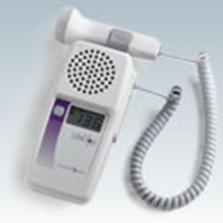


|
Vascular Testing |
|
Phone: 416.931.8395 Fax: 905.813.3079 E-mail: info@thegeminigroup.ca |
|
The ankle-brachial index (ABI) is a simple, reliable means for diagnosing PAD. Blood pressure measurements are taken at the arms and ankles using a pencil shaped ultrasound device called a Doppler. A Doppler instrument produces sound waves (not x-rays) and is considered noninvasive because it does not require the use of needles or catheters. |

|
For more information about this service: |
|
The ABI test approaches 95 percent accuracy in detecting PAD. However, a normal ABI value does not absolutely rule out the possibility of PAD for a few individuals. Some patients with a normal or near-normal ABI results may have few symptoms suggesting PAD. A treadmill exercise or reactive hyperemia test may be recommended to test further for the disease and the cause of pain |
|
The ABI test is used to document the presence or absence of PAD, and can be performed every year to quickly assess whether PAD is getting worse. Obviously, treatment for the disease tries to slow the rate at which leg arteries become blocked. The ABI can also predict how severe an individual's atherosclerosis is and the risk of future leg problems (such as development of future leg rest pain, poor healing of foot wounds, need for leg bypass surgery, or amputation). It can also predict the risk of future problems from atherosclerosis in other parts of the body (such as heart attack and stroke). Lower ABI values are associated with a higher risk. In fact, the ABI value can be an accurate predictor for patients with coronary heart disease (such as the blood cholesterol value, coronary calcium score, and C-reactive protein value). |

Ankle Brachial Index (ABI) |
|
You will be asked to lie on your back while standard blood pressure cuffs are placed around your ankles and arms. These cuffs will be inflated briefly above your normal systolic blood pressure. Once the cuffs are deflated, blood pressure measurements are taken using the Doppler instrument. The arm and ankle systolic blood pressure measurements are recorded. Then the ankle systolic pressures are divided by the highest arm pressure to establish an ABI measurement for each leg. The ABI range that is generally considered normal is .95 to 1.2 |
How is the exam given? |
How reliable is this exam? |